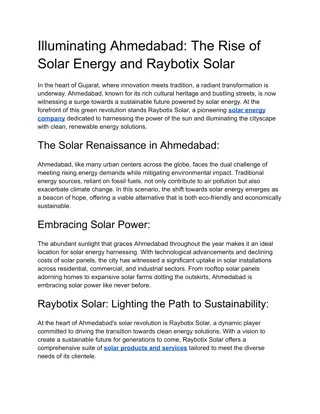Explore the Solar System in a Pocket: Fun Learning Activity
Journey through our solar system in a fun and interactive way with the "Pocket Solar System" activity designed by Ron Thompson. This unique activity allows you to visualize the scale of our solar system by using a strip of tape and simple folds to represent the distances between planets. From the Sun to Pluto and beyond, discover the relative positions of the planets and enjoy a hands-on learning experience that is both engaging and educational.
Download Presentation

Please find below an Image/Link to download the presentation.
The content on the website is provided AS IS for your information and personal use only. It may not be sold, licensed, or shared on other websites without obtaining consent from the author. Download presentation by click this link. If you encounter any issues during the download, it is possible that the publisher has removed the file from their server.
E N D
Presentation Transcript
SOLAR SYSTEM IN A ROLL A POCKET SOLAR SYSTEM Ron Thompson
A Pocket Solar System 1. Cut a 4 foot piece of 2 wide register tape 2. Write SUN at one end and PLUTO/KUIPER BELT on the other end 3. This is the point where things get interesting
A Pocket Solar System 1. Fold the strip in half 2. Which Planet do you think is halfway between the SUN and PLUTO? 3. Hold the strip at arms length with your back facing the group what body part is near the fold? 4. Older folks may feel embarrassed but the kids will giggle !
A Pocket Solar System URANUS 1. Pronounced: YUR an us 1. Write URANUS on the first fold 2. Are you SURPRISED? Most times, the Planets are depicted being close together but they certainly are NOT! 3. Fold the SUN to PLUTO again (in half) 4. Fold the strip in half again (in quarters)
A Pocket Solar System 1. At this point, it s easy to figure where NEPTUNE goes between URANUS and PLUTO 2. Which Planet do you think is halfway between the SUN and URANUS? 3. Is it JUPITER or SATURN?
A Pocket Solar System SATURN 1. Fold the SUN to SATURN 2. This next fold is GIANT JUPITER
A Pocket Solar System 1. Fold the SUN to JUPITER 2. Which do you think is halfway between the SUN and JUPITER? 3. Is it MARS?
A Pocket Solar System 1. The ASTEROID BELT write this on the fold. 2. Fold the SUN to the ASTEROID BELT 3. What Planet falls on this fold? 4. Is it MARS? 5. You guessed right BUT now we need to get the last three planets between MARS and the SUN
A Pocket Solar System 1. Fold the SUN to MARS 2. Fold it in half again 3. Write the last three Planets on their respective lines, from the SUN: (OK to use Initial) 1. MERCURY = M 2. VENUS = V 3. EARTH = E See next slide
A Pocket Solar System Use the following chart and write the AU, Astronomical Unit, next to each Planet Note the average distance from the SUN to EARTH is 93 million miles or, 1 AU. The inferior rock Planets are less than 1 AU and the superior Gas Giants are more than 1AU PLUTO is now around 40 AU but circles the SUN between 30 and 50 AU in its 248 year orbit
A Pocket Solar System At this scale, our 4 foot SOLAR SYSTEM would be 6 MILES from the next closest STAR, Alpha Centauri, 4.2 Light Years from our SUN or almost 64,000 AU s. One LIGHT YEAR is approx. 6,000,000,000,000 miles (Tr.) Our SUN would be a tiny speck in space the size of the period at the end of this sentence. Our planets wouldn t even be visible from this distance Now you know why SPACE is called SPACE
SOLAR SYSTEM IN A ROLL A POCKET SOLAR SYSTEM Ron Thompson























